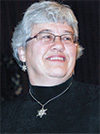“Stormy” was unique in that it was the product of semen that had been frozen in the ’70s from a bull calved in 1969 (Ronbeth Lucky Seven, a calf from Glenholm Alert Dean Pabst x Ronbeth Telstar Bertha). Stormy is 8 years old now, has classified VG and, for a two-month period, was top producer in its herd in its last lactation.
The cow has produced several calves, most recently a heifer sired by Hanover-Hill Starbuck (born April 26, 1979, from Round Oak Rag Apple Elevation x Anacres Astronaut Ivanhoe). Stormy’s heifer is described by A.I. technician John Best as “an antique out of an antique.” Stormy is a solid cow, with considerable bone and substance.
Across the country, a few other dairy producers are looking at old semen usage as a way to correct some faults they are seeing in modern dairy animals. “We have created in the dairy industry animals that are hot-blooded – they burn up their body to produce milk,” states Brantford, Ontario, area dairy farmer Mark Morbrook, who milks 110 cows in a tiestall barn.
Many cows today are taller, sharper and show less body than cows of previous decades. Genetic improvements have created cows that calve younger, milk harder and break down faster. Fifty years ago, it was not uncommon to have cows milk well into their teen years while, in many herds today, cows are turned over after only two or three lactations.
Fertility is a concern in many herds, with cows requiring several services to become pregnant or failing entirely. Unsoundness of feet and legs has become a problem as well, with many herds finding it necessary to trim feet several times a year – another cause for prematurely moving cows out the door.
Morbrook has used old semen a number of times over 15 years or so. The oldest semen he has used was from Lakefield Fond Hope (born Dec. 4, 1954 from Spring Farm Fond Hope x Lakefield Fobes Delight).
This reporter was able to visit the Morbrook farm at Brantford. Comparison of a pair of 2-year-olds showed a heifer sired by Round Oak Rag Apple Elevation (born Aug. 30, 1965, from Tidy Burke Elevation x Round Oak Ivanhoe Eve) to be shorter by about 2 inches but wider across the hooks and pins and deeper in the body. The bone was flat, not round, and the cow stood on a wider heel, thus spreading its weight more evenly. Hocks were clearly stronger, and the rear leg was much better angulated from stifle to fetlock.
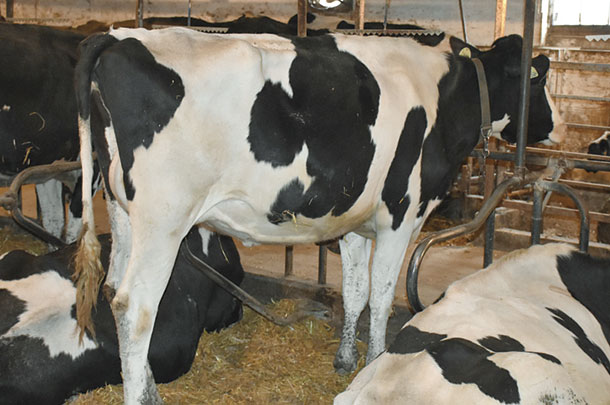
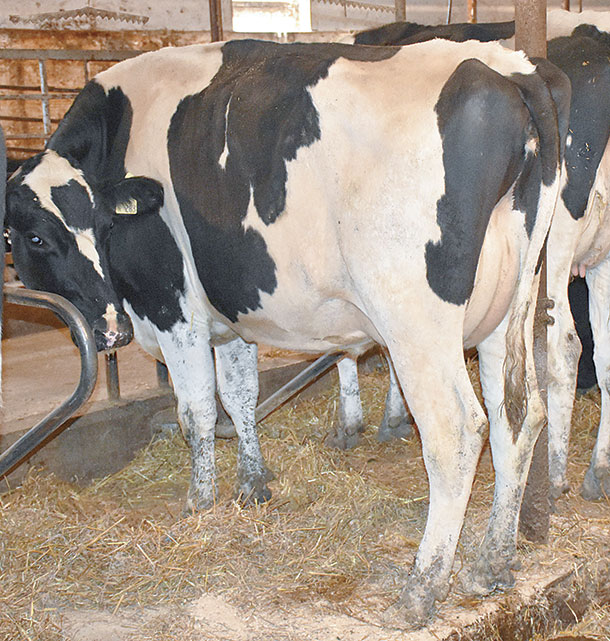
The modern-sired 2-year-old, about six months older, was narrower, showed much less body capacity and was much sharper in features. Its foot was narrower and the rear legs straighter, with less flex at the hock, creating greater stress in holding its weight and causing the animal to frequently shift its weight. While only a comparison of one pair of heifers, the differences were interesting to note and clearly visible. Morbrook’s comment on the Elevation heifer when it calved was, “She started, no stopping her …. had a different vigor.” He says the animal is definitely outperforming its herdmates.
Another cow viewed at the Morbrook farm was a 5-year-old daughter of Hanover-Hill Triple Threat-RED (born Feb. 24, 1972, from Roybrook Telstar x Tara-Hills Pride Lucky Barb). This cow also stood shorter but wider and showing more body capacity than its modern herdmates. Morbrook describes this cow as a very easy cow to get along with and added that there was “Something to be said about keeping easy, long-lived cows.”
Morbrook says the trend to more refined cows has led to a smaller foot with narrower heels. These put more weight to the inside of their toes, causing cows to constantly be shifting their weight to ease the stress on their feet. Morbrook sees a need to get away from trimming hooves three times a year. He has noticed his older-style cows seem to stand more comfortably on a wider foot.
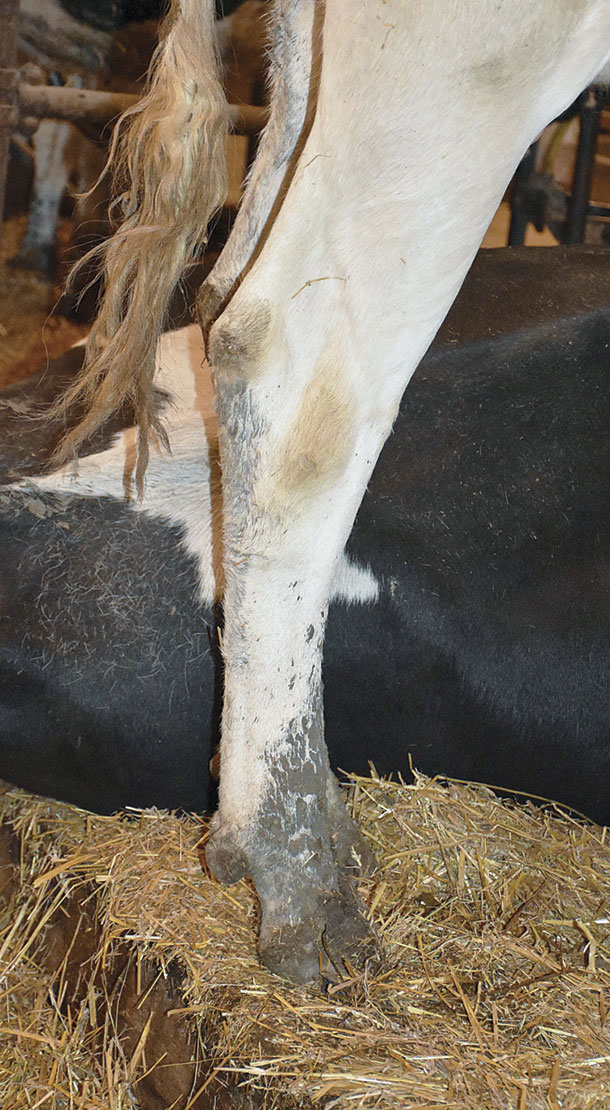
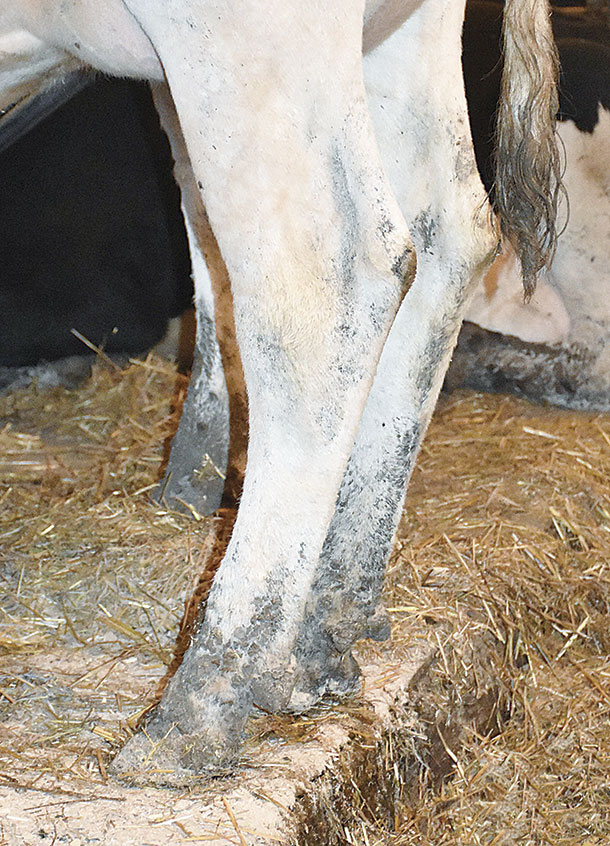 Morbrook admits that not all cows should be bred to old semen – there is a need to analyze what that bull can provide – and this includes looking at his mother and what she produced. Then the semen needs to be used on the cow that needs those characteristics. He notes not all old semen produces what is being looked for, and the resulting calf can be either the best or worst in the herd.
Morbrook admits that not all cows should be bred to old semen – there is a need to analyze what that bull can provide – and this includes looking at his mother and what she produced. Then the semen needs to be used on the cow that needs those characteristics. He notes not all old semen produces what is being looked for, and the resulting calf can be either the best or worst in the herd.
Luke Van Huizen farms on Vancouver Island, milking 120 cows twice daily in a double-six herringbone parlour – with plans to upgrade to robots someday. His herd is composed entirely of Holsteins, type-classified and on DHI.
Van Huizen has used older semen for 10 to 15 years, but not from any specific era – the oldest he has used was collected in the ’60s – from Ideal Fury Reflector (born April 1959 from Woodbourne Inka Reflector x Ideal Burke Bessie). There is “still a place for the right mating,” he claims. He looks for the best mating, whether it be modern or older genetics. He values reliability – what a bull can or cannot do – for example, a very refined cow may benefit from using older genetics to provide more substance.
Van Huizen has a daughter of Rosafe Citation R – a big name in his time. He is “quite happy with her,” he says, adding that the cow is really balanced and solid with a good working udder. This animal catches every breeding, indicating high fertility, and as an added bonus is a calm cow, easy to be around. This cow has an above-average BCA, especially butterfat, in the herd.
Van Huizen finds cows sired by old bulls “take care of themselves better.” They are less likely to be underconditioned and are more balanced in their growth. He does not give these cows any special treatment, handling them the same way as his modern cows.
Van Huizen has stored semen from bulls like:
- Rosafe Citation R (born Aug. 29, 1958, from ABC Reflection Sovereign x Glenvue Nettie Jemima)
- Hanover-Hill Triple Threat-RED (born Feb. 24, 1972, from Roybrook Telstar x Tara-Hills Pride Lucky Barb)
- Round Oak Rag Apple Elevation (born Aug. 30, 1965, from Tidy Burke Elevation x Round Oak Ivanhoe Eve)
- Hanover-Hill Starbuck (born April 26, 1979, from Round Oak Rag Apple Elevation x Anacres Astronaut Ivanhoe)
- Conant-Acres-JY Broker ET (born Oct. 10, 1985, from S-W-D Valiant x Swampy-Hollow Elevation Sweet)
“People have undervalued how far management practices have come,” Van Huizen states, adding that cows born from older genetics can still reach respectable, profitable levels of production.
He says production has risen, not just from improved genetics but also from tremendous improvements in the way cattle are managed. He is pleased with the results he has seen so far. “I have had good success with my breeding program and feel validated by what I’ve done,” he declares.
Kevin Klages of Neustadt, Ontario, has used semen from Regancrest Dundee ET (born June 3, 1999, from Marcrest Encore x Snow-N-Denises Dellia) and says it has worked well for him. Klages says there is definitely a place for old semen usage if you know your variables and can see blood crosses that have worked well in the past. He stresses it would be important to use on a cow that complements the bull used. An experienced longtime breeder quipped that geneticists would say it’s a step backward, but he thinks it’s “pretty neat.”
It is, of course, important to realize that not all old semen will work as well as hoped. Too many other factors are involved. Standards have changed, management has changed, and the dams involved have as much influence as the sires on any particular calf, with the result that the outcomes are not always as good as they look like they should be.
The question remains: Is use of old semen progressive or regressive? In the final analysis, it is a question each dairy producer must answer for him or herself. ![]()
PHOTOS 1 & 2: Looking at these 2-year-olds in the Morbrook herd, it is apparent the modern-sired cow (Top) is narrower with less body capacity compared to a 2-year-old (below) sired by Round Oak Rag Apple Elevation, a bull born on Aug. 30, 1965.
PHOTOS 3 & 4: A close up of the hock and rear leg of the heifers shown above, highlights the stronger, wider bone on the one sired by Elevation (bottom image).
A couple of these dairy producers have shared their email addresses in case any readers wish to contact them directly. Mark Morbrook can be reached at Mark Morbrok and Luke Van Huizen can be contacted at Luke Van Huizen.
Alice Guthrie is a freelance writer from Hagersville, Ontario.
